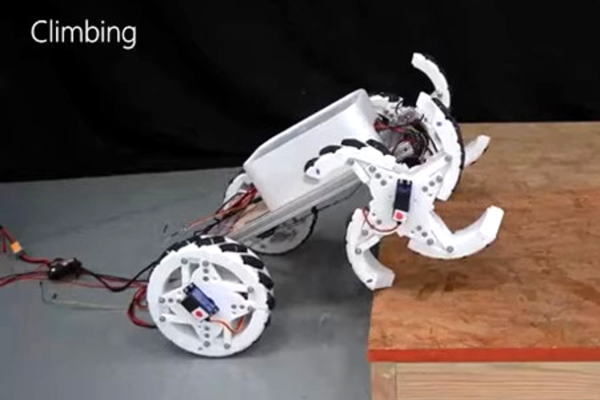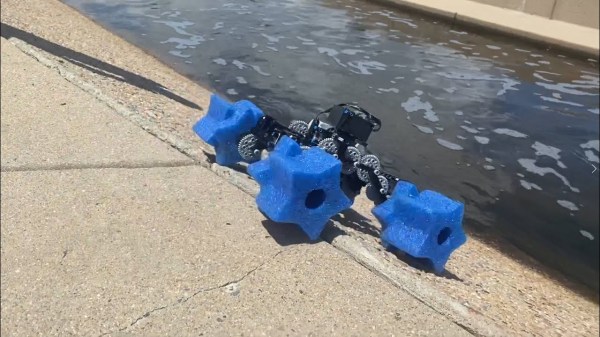What’s the strangest wheel? The omniwheel. Unless you count whegs — “wheel legs” — as wheels. This research paper from Shanghai Technical University explores a mash-up of the two ideas, where the wheels roll as standard omniwheels until a servo on the axle unfurls them into their whegs configuration. The result? OmniWhegs!
The resulting vehicle is a bit of a departure from the original whegs concept, which used compliant mechanisms which passively balanced the force across the legs. Here, the omniwhegs are rigid and actually use a synchronization routine that you can see in the video embedded below.
If you can’t get enough omniwheels, you’re not alone. Here’s a rare three-wheeler, and here’s an omniwheel made of MDF. We haven’t seen enough whegs-based bots, but OutRunner is pretty astounding, and we think deserves a second look.
We’ve also seen wheels that convert to whegs before, but without the omni. And we don’t know if that one ever made it out of render-of-a-robot phase.
So kudos to the Shanghai team for taking the strangest possible wheels and actually building them!













